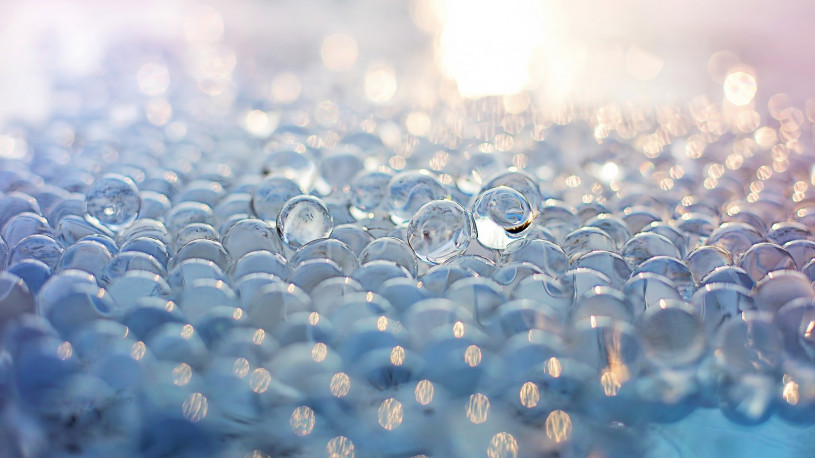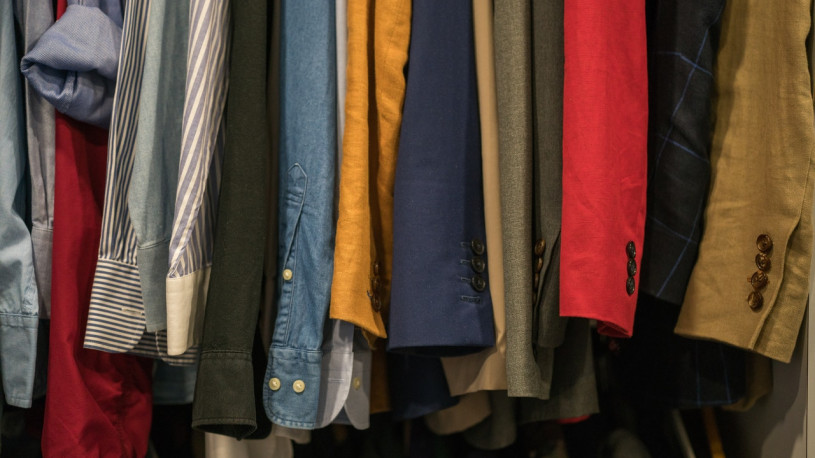-
Charged Polymers Make Chemical Sprays ‘Stick’ or the End of Surfactants in Agribusiness
 Continue Reading
Continue ReadingAs any crop protection trader, agribusiness salesman or farmer knows, the spraying of agricultural products is inefficient. Even if the wind and temperature is perfect much of the spray will not adhere to the plant and will drip off leaves and stems onto the ground.
Researchers at MiT who have been studying the effectiveness of sprays on plants estimate that, “When farmers spray their fields with pesticides or other treatments, only 2 percent of the spray sticks to the plants.” This low retention rate not only wastes large amounts of agricultural products at great expense to the farmer, but also has a negative impact on wildlife as run off enters local ecosystems.
To date, agricultural chemists have focused on improving crop protection products’ ability to stay on leaves with the use of surfactants and similar chemical products. By adjusting the chemical make-up of a pesticide they are able to reduce surface tension, so that less of the spray bounces off, reducing waste.
However, droplets of spray are in contact with a plant for only fractions of a second, giving the chemical properties of a surfactant little to time to take effect. This started a research team from MiT looking for a completely new alternative to the problem. As team leader and associate professor of mechanical engineering at MiT Kripa Varanasi said, the team began ‘playing around with charge interactions’.
This is the idea that droplets of a product could be given positive and negative charges so that they would have a better chance of ‘sticking together’ on a leaf.
Whilst this idea may sound a little unusual, tests conducted in the laboratory have shown that the new system, “could allow farmers to get the same effects by using only 1/10 as much of the pesticide or other spray.”
The MiT website describes the breakthrough in more detail as follows;
“The new approach uses two different kinds of additives. The spray is divided into two portions, each receiving a different polymer substance. One gives the solution a negative electric charge; the other causes a positive charge. When two of the oppositely-charged droplets meet on a leaf surface, they form a hydrophilic (water attracting) ‘defect’ that sticks to the surface and increases the retention of further droplets.
Leaves of many plants have a natural tendency to be hydrophobic (water repelling), which is why they often cause droplets to bounce away. But creating these tiny hydrophilic bumps on the leaf surface strongly counteracts that tendency, the team found.”
The results were published in the scientific journal Nature Communications, and included these images of the procedural theory and practice, shown here;
“(a) Schematic of experimental set-up for simultaneous spraying of opposite polyelectrolytes. (b) Expected behaviour for the impact of a droplet with one polyelectrolyte polarity on a droplet with an oppositely charged polyelectrolyte. The coalesced drop sticks to the surface.”
“(c,d) Snapshots of simultaneous spraying on a superhydrophobic surface. Sprays with very low droplet density were used to enhance visualization and slow down the process. In the first row, the two sprayers are spraying water and the surface remains dry. Almost all droplets bounce off. Some small droplets are deposited but they are cleared as soon as another droplet impacts them. In the second row, opposite polyelectrolytes are sprayed. Individual droplets hitting the surface still bounce off. After 120 ms of spraying, the first event of a droplet of one polyelectrolyte hitting a droplet containing the opposite polyelectrolyte occurs. The coalesced drop sticks to the surface. Subsequent drops that hit this droplet also coalesce on it. Similar events happen all over the surface. Many droplets can be seen on the surface after 3 s of spraying. Scale bar, 1 cm.”
To watch a downloadable video of the spray in action, click here.
To watch the MiT video explanation of the discovery on YouTube, click here.
Given this evidence, it seems that the research team have discovered a novel and exciting new approach to combat the challenge of pesticide spray application. Naturally, further study is needed to examine how (and if) the process will function in the real world. So for that reason, one of the team, graduate student Mahak Damak, has already travelled to India to see for himself how products are applied on small farms. Whilst the team is also, “experimenting with different sprayer designs that could simplify the process further, potentially eliminating the need for two separate tanks”.
Even if this does not prove possible, it should be a simple task to use two tanks each filled with the same crop protection product, but with each tank having mixed into it the different polymer additives. Given that much of the third world uses hand-held spraying systems to treat their crops the process seems easily applicable for the majority of the world’s agriculture. The new system “should be easy to implement, and it doesn’t require extra equipment,” Damak adds.
Furthermore, the polymers used in the experiments are relatively low-cost and have no negative environmental impact, as the report itself states, “To study the effect of precipitation on drop impacts, we used two polyelectrolyte molecules. Linear polyethyleneimine was the positively charged polyelectrolyte, with NH2+ groups in solution, while polyacrylic acid was the negatively charged polyelectrolyte with COO− groups in solution.”
But the researchers then ran the experiments again using different polymer additives, and found equally impressive results. As they state, “We also show similar retention properties using different polyelectrolyte molecules … Chitosan (positively charged) and Alginate (negatively charged). These polyelectrolytes are polysaccharides that are non-toxic, biocompatible and biodegradable, which makes them excellent candidates for plant treatment”
The team is also pondering what further applications the use of positively and negatively charged polymers could have in different sprays. For example, could the same technology be applied to anti-frost chemicals for the citrus orchards in Florida?
Could two positive (or negative) charges be used to increase ‘bounce rate’ for where a spray isn’t wanted, for example in applying fertiliser to crops when it is wanted in the soil and not on leaves?
Indeed, could there be a use for the process outside of the agricultural industry? Is there a need for a more adhesive spray for hydrophobic surfaces in the paint and coatings industry? Could the technology be applied to adhesives? Or household cleaning products?
So many questions remain unanswered that it seems that the idea of positively and negatively charged chemical sprays might stick around for a while yet.
Photo credit: MiT
Video: Melanie Gonick, MiT
-
A New Polyethylene Textile that Keeps you Cool
 Continue Reading
Continue ReadingA new polyethylene fabric has been created that a research team claims can keep a person twice as cool as conventional textiles. Better still, its dynamics are based on low-cost polyethylene layers that have a cotton mesh interwoven between them. This makes it cheap to produce and fashionable to wear.
The breakthrough was made by a research team from Stanford University and is based on the fact that a body cools in two distinct ways; through perspiration (where sweat is free to evaporate through a material, something regular fabrics do), and through infrared radiation (a benign wave of light that all objects emit). Whereas regular clothing traps the infrared emissions close to the body, the polyethylene layer allows these waves to leave making a person ‘nearly 4 degrees Fahrenheit cooler than if they wore cotton clothing’.
Infrared radiation is not a small deal when it comes to keeping us cool, as Shanhui Fan, a professor of electrical engineering who specializes in photonics (the study of visible and invisible light) explained when he said that, “Forty to 60 percent of our body heat is dissipated as infrared radiation when we are sitting in an office. But until now there has been little or no research on designing the thermal radiation characteristics of textiles.”
This is because textiles that do not trap infrared radiation are often transparent, something that the researchers pointed out when publishing their results in the journal Science, as follows;
“The challenge for developing a material that is transparent to IR but opaque to visible light is that the radiation spectrum (7 to 14 μm) overlaps with most of the IR absorption wavelength of common textile materials. As a result, most textile materials strongly absorb human body radiation and have very low IR transparency. [However] Polyolefins such as polyethylene (PE) have narrow absorption peaks centered at the wavelengths of 3.4, 3.5, 6.8, 7.3, and 13.7 μm, which are all far away from the peak of human body radiation. However, one cannot use a normal PE film as textile material because it is visibly transparent [much like kitchen cling film or Saran wrap] and does not have desired properties for textile, such as air permeability and water-wicking [it does not convey liquid via capillary action].”
So the Stanford engineers had a problem, and half a solution. They knew that the problem with clothes in hot weather was that they kept people warm by preventing infrared radiation, but they also knew that simple polyethylene films could not be used for clothing as they limited air-flow, were relatively water-tight and were typically transparent.
As the online journal Science Daily explains, they, “…tackled these deficiencies one at a time. First, they found a variant of polyethylene commonly used in battery making that has a specific nanostructure that is opaque to visible light yet is transparent to infrared radiation, which could let body heat escape. This provided a base material that was opaque to visible light for the sake of modesty but thermally transparent for purposes of energy efficiency. They then modified the industrial polyethylene by treating it with benign chemicals to enable water vapor molecules to evaporate through nanopores in the plastic, allowing the plastic to breathe like a natural fiber.”
By doing this the researchers had, “a single-sheet material that met their three basic criteria for a cooling fabric.”
Finally, to make the new material more like a fabric they wove a cotton mesh between two layers of the polyethylene to create a new textile, which when tested against a piece of cotton of identical thickness the modified fabric kept the body 3.6° F cooler.
You can see more about the development of this new polyethylene textile on the YouTube video here.
The future now looks exciting in finding ways to further develop this new textile. Such that the researchers, “are continuing their work on several fronts, including adding more colors, textures and cloth-like characteristics to their material.”
But they are also keen to keep production costs and chemical raw material prices low, so that the final textiles are economically viable. As Yi Cui, an associate professor of materials science and engineering and of photon science told the Stanford University website, “If you want to make a textile, you have to be able to make huge volumes inexpensively.”
With research that is focused on not only a practical goal in keeping people cool, but is also aware of polymer markets and using readily available polyethylene supplies, then the team is sure to have success in bringing their new plastic fabric to market.
But in more than just clothing, maybe it is possible to develop polyethylene to be treated in a way that makes it useable to cool other objects. For Prof. Fan believes, “that this research opens up new avenues of inquiry to cool or heat things, passively, without the use of outside energy, by tuning polymers or other materials to dissipate or trap infrared radiation.”
And if polymer engineers can master that breakthrough, then polyethylene markets will change forever.
Photo credit: L.A. Cicero
Main Photo credit: Stanford University
-
What Impact will this Electrochromic Plastic Film have on Home and Office Design?
 Continue Reading
Continue ReadingA research team from the Cockrell School of Engineering at The University of Texas has developed a thin electrochromic plastic coating for windows that not only saves on heating and cooling bills, but can also turn opaque or tinted by the flick of a switch.
Whilst industrial chemists have long been able to manufacture coatings that can tint glass with a switch, for many years these films required a constant electrical current. That said, recently a research team from Cambridge University developed a ‘smart glass’ that, according to online journal Popular Mechanics, “can switch back and forth between transparency and opaqueness while…only needing power when making the switch.”
But as the new design from Texas is a thin film that coats the surface (rather than being built into the glass), production costs are significantly reduced and the film is useable on all sorts of surface, such as sunroofs or even curved glass.
The online journal Popular Mechanics outlined the many advantages the discovery has over older methods, stating, “Other types of electrochromic plastic do exist, but are very bulky and require high temperatures to manufacture. This new process produces a thin, flexible material without resorting to high temperatures. The new material is also twice as energy-efficient. The result is a flexible, low-cost plastic sheet that can be applied to any window or any surface, no matter what the shape of the surface is. These sheets can then control the amount of sunlight entering the building, keeping rooms cool in the summer and warm in the winter.”
The online journal Science Daily reports on the chemical structure of the new material, explaining how, “The new electrochromic material, like its high-temperature processed counterpart, has an amorphous structure, meaning the atoms lack any long-range organization as would be found in a crystal. However, the new process yields a unique local arrangement of the atoms in a linear, chain-like structure. Whereas conventional amorphous materials produced at high temperature have a denser three-dimensionally bonded structure, the researchers’ new linearly structured material, made of chemically condensed niobium oxide, allows ions to flow in and out more freely. As a result, it is twice as energy efficient as the conventionally processed smart window material.”
Delia Milliron, an associate professor in the McKetta Department of Chemical Engineering, explained how her team was able to make the discovery, stating that, “There’s relatively little insight into amorphous materials and how their properties are impacted by local structure. But, we were able to characterize with enough specificity what the local arrangement of the atoms is, so that it sheds light on the differences in properties in a rational way.”
The research was published in the journal Nature Materials, where they, “report on a room-temperature solution process to fabricate electrochromic films of niobium oxide glass (NbOx) and ‘nanocrystal-in-glass’ composites (that is, tin-doped indium oxide (ITO) nanocrystals embedded in NbOx glass) via acid-catalysed condensation of polyniobate clusters.”
Coating manufacturers, architects and plastics producers are showing a lot of interest over this project due to the triple advantage of its lower production cost, stylish yet practical application and cost saving impact on fuel bills. Others have already highlighted how the coating could be turned on or off via a timer or other automatic switch, say for a time of day when sunlight hits a part of the building or to turn a window opaque at sunset.
Meanwhile the researchers are continuing their work, hoping to use their understanding of amorphous materials to refine this and other film coatings. As Milliron says, “We want to see if we can marry the best performance with this new low-temperature processing strategy.”
For more news on this and other chemical industry based projects join the Spotchemi LinkedIn group via this link.
Photo credit: Cockrell School of Engineering



